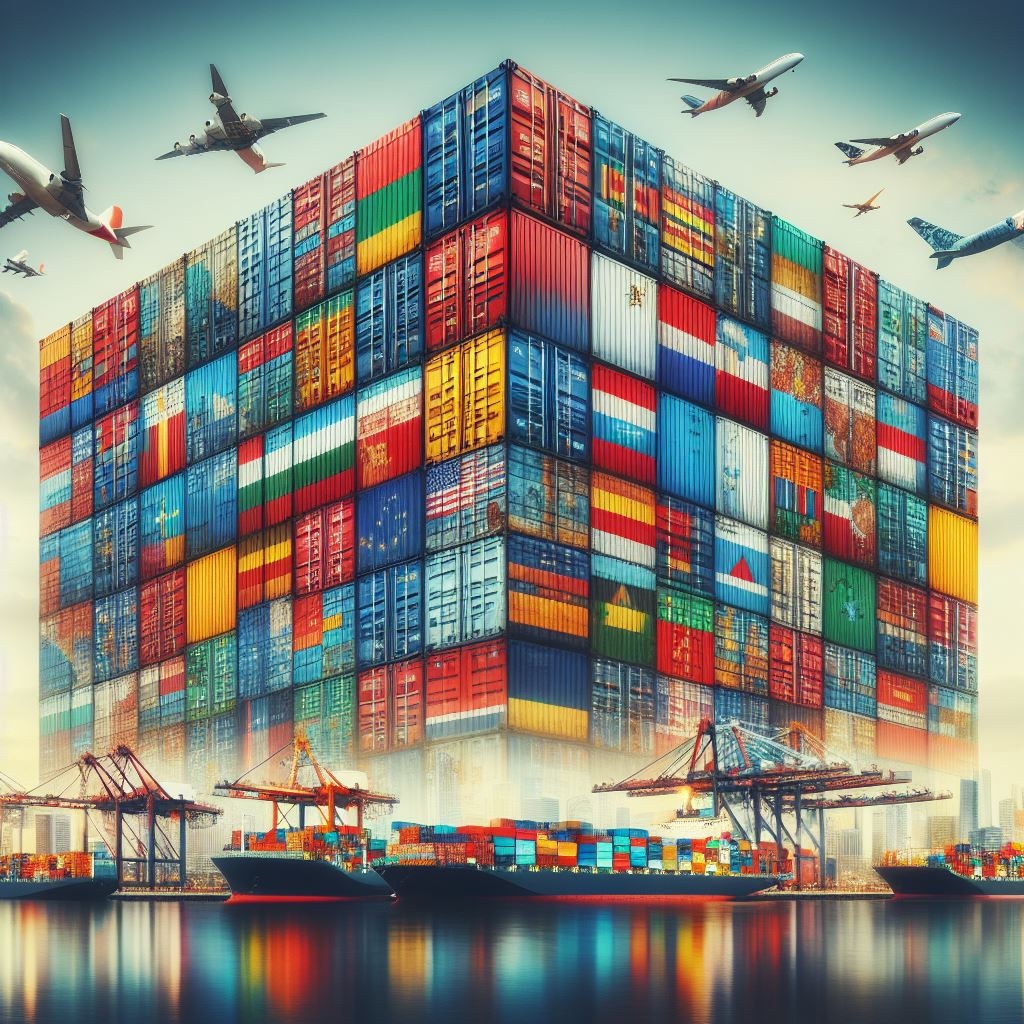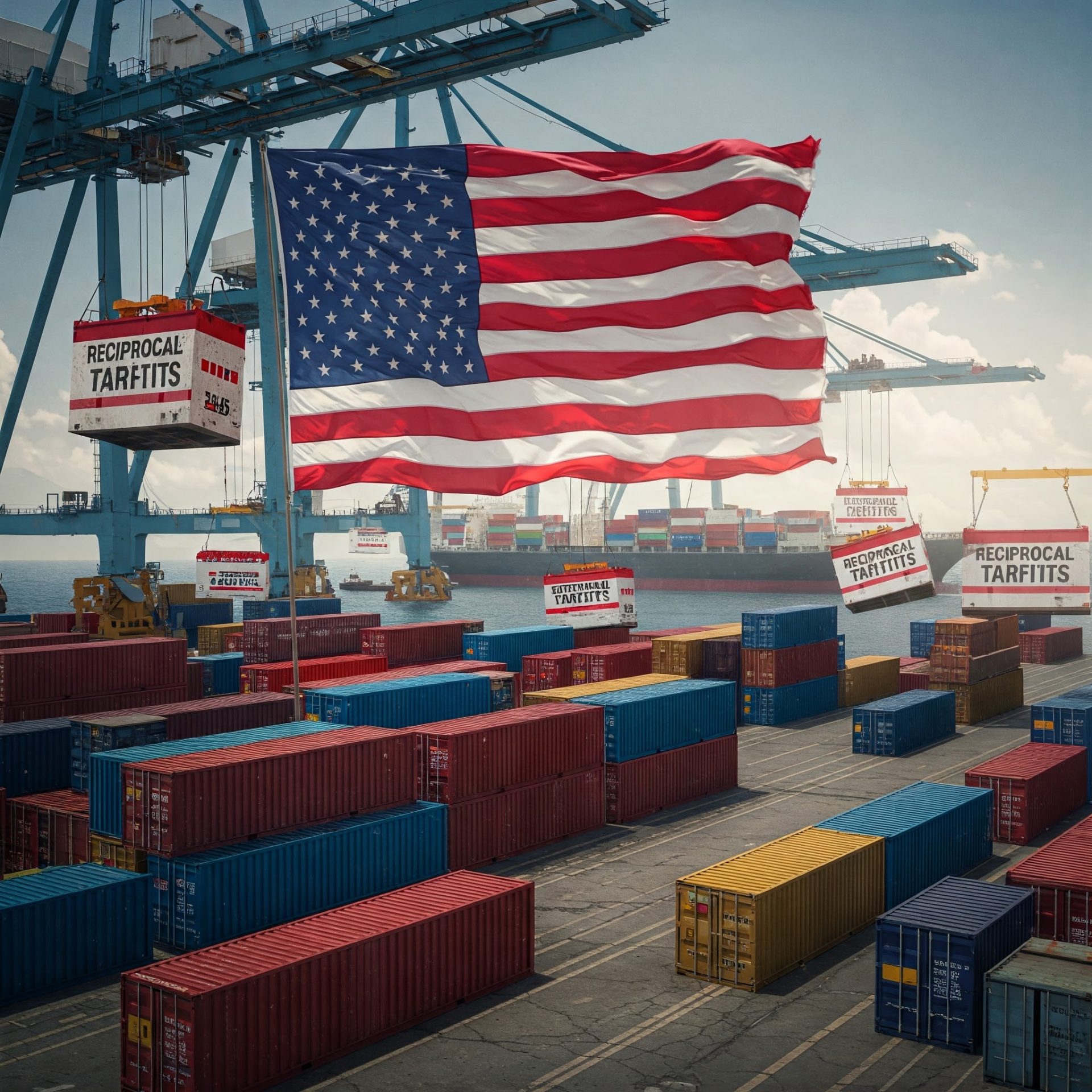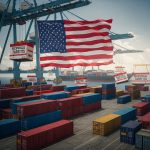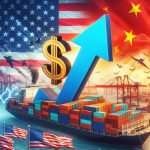Negotiations Dominate Over Retaliation as Reciprocal Tariffs Hit
President Trump’s reciprocal tariffs are set to go into effect tomorrow (or tonight at midnight, depending on how you look at it). We’ve had about a week since “Liberation Day” and the Trump Administration’s announcement of the baseline 10% tariff plus the country-by-country reciprocal tariff increases based on a combination of tariffs, non-tariff barriers to entry for U.S. goods, and “other forms of cheating” the Trump Administration has calculated.
Last week, we saw the immediate reaction of China to retaliate and Vietnam to seek negotiation for a zero-tariff deal. The question was whether more countries would follow China’s lead with retaliatory measures or more would reach out to negotiate, like Vietnam. It turns out negotiation is the much more common reaction.
But before we get into the countries negotiating with the U.S., let’s look at how things are escalating with China after its retaliatory response to President Trump’s reciprocal tariffs.
Tariffs on Chinese Goods Will Rise to 104% Tonight
As we covered last week, China responded to the Trump Administration’s reciprocal tariffs with retaliatory tariffs and measures of its own.
President Trump, of course, demanded China halt those retaliatory moves, or the U.S. would increase the tariffs on China by even more. China, obviously, did not relent, so the Trump Administration is levying even higher tariffs on China that will go into effect at midnight, along with the rest of the reciprocal tariffs.
Andrew Moran reported in the Epoch Times:

President Donald Trump’s additional 50 percent on China will take effect on Wednesday at 12:01 a.m., White House press secretary Karoline Leavitt told reporters.
The president on April 7 threatened to impose an extra 50 percent on the Chinese regime if Beijing didn’t remove its tit-for-tat 34 percent retaliatory levies on U.S. goods entering the country. Beijing rejected the demand.
…
In total, the Trump administration is set to impose a 104 percent tariff rate on Chinese imports.
Journalist Terri Wu, who specifically covers China-related issues, wrote an article for the Epoch Times, explaining why the U.S. has the upper hand on China in this tariff standoff. It’s a full, long article worth reading, but perhaps the section that best encapsulates its argument is this:
China expert Alexander Liao thinks the current situation will eventually become a contest between Trump and Xi. Trump depends on the might of the U.S. economy, while Xi relies on support from the communist regime’s tight control system.
Given this, Liao said Xi is disadvantaged because he has little policy room to maneuver.
“Washington has many cards. Beijing has few,” he told The Epoch Times.
During the trade war between the U.S. and China during president Trump’s first term, we sometimes got into perspectives about the U.S. having the advantage, or maybe there was no winning for either or country, or the possibility President Trump was misunderstanding China… but ultimately, the U.S. did seem, then and now, to have an advantage and more cards to play.
The escalation of tariffs in the previous trade war ended with a Phase One Trade Agreement full of concessions from China. But perhaps China got the last laugh in the first trade war because, about a week later, COVID spread through Wuhan, China before exploding into a pandemic, and China never followed through on what it agreed to in the trade deal.
One could argue that now we’re really only in an extension of that trade war, as the Biden Administration did not get rid of the Trump era tariffs (even eventually adding to them) and President Trump wasted little time in levying more tariffs on China after his return to the White House.
Perhaps seeing China’s painful example of suffering more tariff escalation after retaliation is part of what has other nations thinking more pragmatically, seeking negotiations rather than retaliation. They want, of course, to see President Trump relent on tariffs he has and is about to place on them. Some people have been saying he will pause on the tariffs to negotiate before implementing them, however…
No Pause on Reciprocal Tariffs

Despite rumors and pseudo-news reporting that the Trump Administration will or is considering a 90-day pause on the reciprocal tariffs, shippers shouldn’t get their hopes up. I hate to burst your bubble if you were hoping for this pause, but there is no substantiation to the claim it’s happening or was even being considered. The Trump administration has used one of the president’s favorite old terms for the rumor: fake news.
Even with the administration reporting around 50 countries reaching out to it to negotiate tariffs, its officials say it will not be pausing the reciprocal tariffs.
Ronny Reyes reports in the New York Post:
Commerce Secretary Howard Lutnick said about 50 nations have reached out to the US to discuss President Trump’s sweeping tariffs, though he said nothing will stop the levies from going forward.
Defending the president’s economic plan on Sunday, Lutnick said the calls from foreign officials prove that “these countries know that they’ve been ripping us off,” suggesting there was no room for negotiations.
“There is no postponing,” he told CBS’s “Face the Nation.” “They are definitely going to stay in place for days and weeks.”
Specific Countries Negotiating Over Tariffs
While reports and the Trump Administration put the number of countries reaching out to negotiate tariffs at 50 or more, there are several we know are already trying to work out deals with the U.S because of meetings with the administration or statements to the media. Yesterday, Anders Hagstrom and Aislinn Murphy put together a Fox Business article attempting to list “every country working on trade deals with the U.S.”
Their list consists of:
- Israel
- Japan
- United Kingdom
- Vietnam
- Cambodia
- Thailand
- India
- South Korea
- Australia
- Argentina
- Canada
- Mexico
- Switzerland
- Malaysia
- European Union
- Indonesia
In future blogs, we’ll likely get into more specifics that are coming out about country’s negotiations with the U.S. Most of what everyone has to work from on this front are statements made either by leaders of other countries or the Trump Administration. However, that is enough to notice themes…
Free Trade Or Something More
A motif has emerged of countries looking for zero-for-zero-tariff deals with the U.S. Perhaps the most notable of these in the last day or so came from the EU.
As Politico’s Koen Verhelst, among others, reported, European Commission President Ursula von der Leyen said, “We have offered zero-for-zero tariffs for industrial goods as we have successfully done with many other trading partners. Because Europe is always ready for a good deal. So we keep it on the table.”

She’s also made it clear that retaliatory measures are not completely off the table, but the EU is trying to negotiate rather than get into some kind of escalating trade war situation with the U.S.
President Trump is looking for more than just deals involving the dropping of tariffs by both the U.S. and the country with which he’s negotiating. President Trump is targeting the trade deficits the U.S. has with other countries. If not completely eliminating a deficit, he wants to reduce it. And that’s what he’s telling the EU in regard to its zero-for-zero trade offer.
Zoya Sheftalovich reports in Politico:
The European Union will have to commit to buying $350 billion of American energy to get a reprieve from Donald Trump’s sweeping tariffs, the U.S. president said late Monday, dismissing Brussels’ offer of “zero-for-zero” tariffs on cars and industrial goods.
Of course, the EU’s offer is not a complete zero-for-zero deal. However, it would remove tariffs from a great deal of goods. It would be a move toward free trade between the countries. But even if countries were to make completely free trade deals with the U.S. where there were no tariffs nor any other barriers to trade between the countries, I don’t think they would be satisfying what President Trump wants.
I think the president is interested in moving production back to the U.S. to increase American jobs and remove its reliance on other countries for goods. He wants the U.S. buying American and other countries buying American. He wants commitments from other countries to buy American to help inject more investment in American manufacturing, farming, and jobs. I think he’s interested in using protectionist policies of tariffs to boost U.S. businesses, the economy, and reduce national debt with generated revenue (adding to reduced government spending) through any foreign products brought in to the country.
As President Trump feels the U.S. has been taken advantage of on the world stage in terms of trade for decades, I think he now wants to give the U.S. advantage over other countries in trade. Zero-for-zero tariff trade deals would be an easy exit strategy to his tariff policies. However, I don’t think that’s what he wants. Ultimately, I think he wants deals that are slanted in America’s favor. Thus, I think the upcoming weeks and months will be very interesting to see what kind of agreements may emerge from the incoming reciprocal tariffs.





